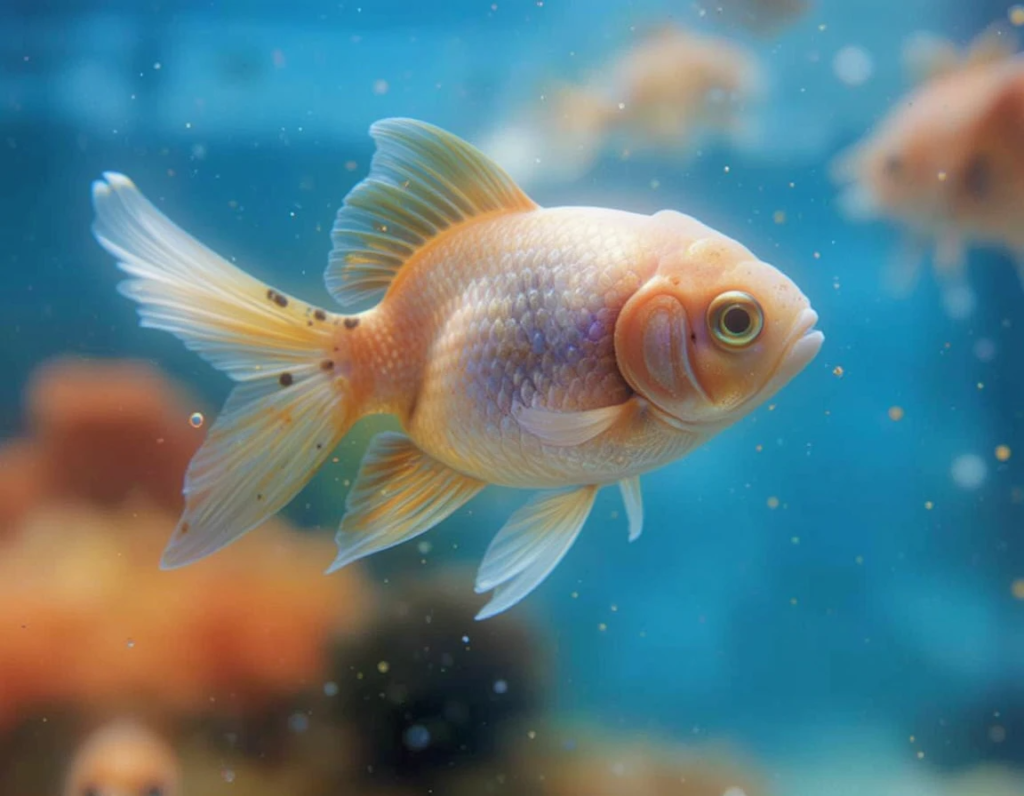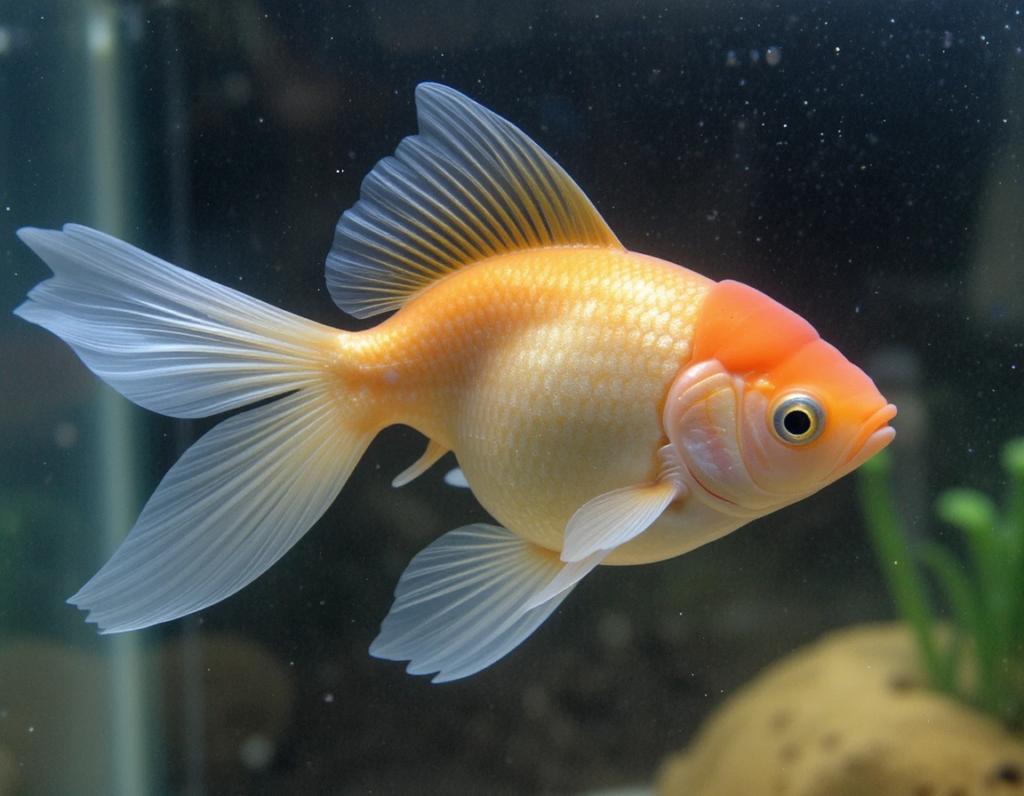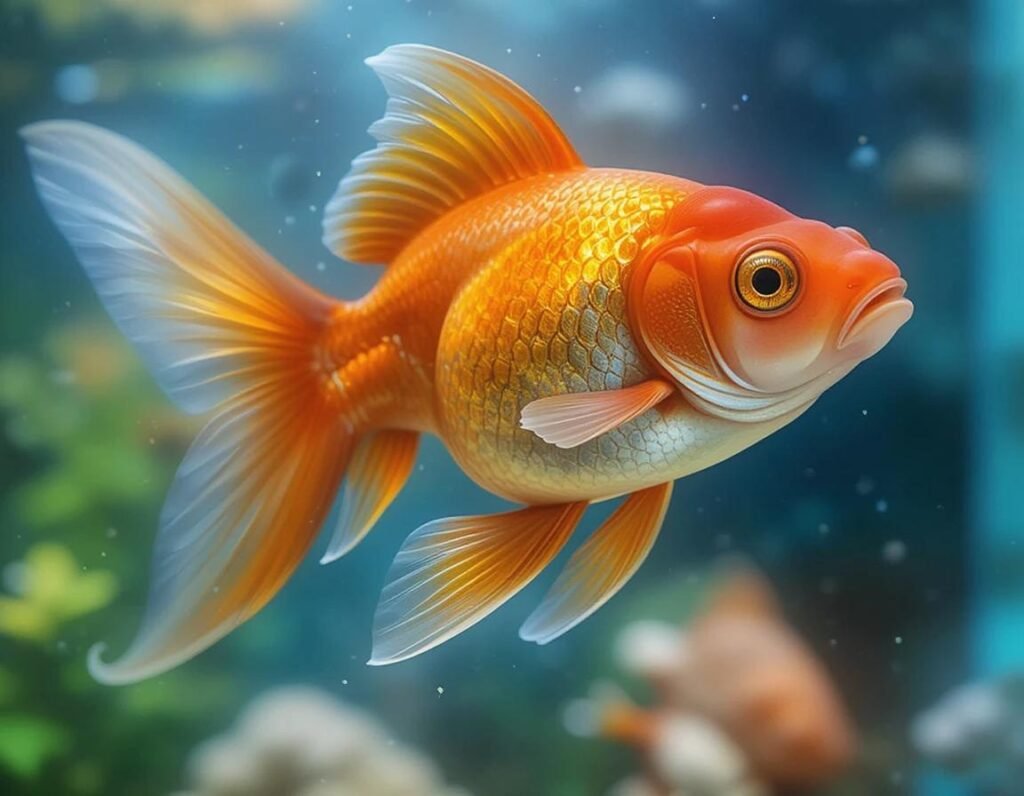
If you’ve ever seen your goldfish floating awkwardly at the top of the tank, or maybe even swimming upside down like it’s auditioning for a circus act, you might have encountered a little-known issue called swim bladder disease. But don’t worry—your goldfish isn’t going through a mid-life crisis. It just needs a bit of extra care to get back to its old, swimming-around-like-a-hero self.
What is Swim Bladder Disease?
Swim bladder disease is exactly what it sounds like: a problem with the swim bladder, which is an organ that helps your goldfish stay buoyant and control its position in the water. Think of the swim bladder like a built-in lifejacket that keeps your goldfish from floating aimlessly or sinking to the bottom. When this system goes awry, your goldfish may find itself swimming sideways, upside down, or even drifting helplessly at the water’s surface.
Causes of Swim Bladder Disease
A goldfish’s swim bladder can go on the fritz for several reasons. Here are some of the most common causes:
- Overfeeding – Like us, goldfish can suffer from “too much of a good thing.” Overfeeding, especially with foods that expand in the stomach (like pellets), can put pressure on the swim bladder. This is one of the most common culprits, so be sure to feed your goldfish the right amount. It’s hard to resist feeding them more when they look at you with those big, hungry eyes, but remember: moderation is key!
- Constipation – Yes, even fish get backed up. A constipated goldfish might have a swollen belly that presses on the swim bladder, affecting its buoyancy. It’s like when we eat too much pizza and can’t sit upright—except, in this case, it’s more watery.
- Infections – Bacterial or parasitic infections can inflame the swim bladder, causing issues with buoyancy. Poor water quality can lead to infections, so keeping your tank clean is critical for your goldfish’s health.
- Genetics – Some fancy goldfish breeds, like the round-bodied ones or those with fancy tails, are more prone to swim bladder problems. They just can’t help being extra adorable and a little quirky in the swimming department.
- Water Quality – Poor water conditions can stress out your fish and lead to swim bladder issues. This is one reason why regular tank maintenance is a must! A clean tank equals a happy fish.
How to Spot Swim Bladder Disease
The signs of swim bladder disease are hard to miss. If your goldfish seems to be floating at an odd angle, bobbing uncontrollably, or swimming upside down (and not in a cute, “I’m doing tricks” kind of way), it could be suffering from swim bladder disease. It’s like when we wake up with bed hair and wonder, “What happened last night?” Only your fish probably doesn’t have a mirror to check its reflection.
How to Treat Swim Bladder Disease
Now that you know what it is, let’s talk about how to help your goldfish get back on track.
- Check Your Feeding Routine – If you suspect overfeeding, cut back on the food and stick to a regular feeding schedule. Offer your fish small portions, only what it can eat in a few minutes. And no sneaking snacks—your goldfish’s waistline will thank you.
- Fasting – For constipation-related issues, try fasting your goldfish for 24-48 hours. This allows its digestive system to reset. During the fast, you can offer small amounts of blanched peas (just peel them first!) to help your goldfish “go.” It’s like giving your goldfish a spa day for its digestive system.
- Increase Water Quality – Make sure the water temperature, pH, and ammonia levels are all in the safe range. Perform regular water changes, especially if you’ve noticed issues with your fish’s buoyancy. Clean water equals a happy, swimming fish.
- Adjust the Diet – Offer a variety of food, including sinking pellets, so your fish doesn’t have to overeat to reach the food at the surface. You can also give your goldfish high-fiber foods like peas to help keep everything moving.
- Use Aquarium Salt – Sometimes, adding aquarium salt to the tank can help with swelling or infection. Just make sure to use the right kind, and follow the instructions carefully—too much salt can make matters worse.
When to Call the Vet
If your goldfish’s symptoms don’t improve after a few days of treatment, or if the problem gets worse (like your fish is unable to swim at all), it’s time to get professional help. A fish vet can diagnose any underlying issues and prescribe medications if needed.
Wrapping Up: Goldfish Recovery Time
Good news! Most cases of swim bladder disease are treatable, especially if caught early. With the right care, your goldfish will be back to swimming upright and showing off its moves in no time. So, remember: keep your tank clean, feed your goldfish responsibly, and give your little swimmer the TLC it deserves. Your fish will thank you—well, in its own bubbly, tail-wagging way!
FAQs about Goldfish Swim Bladder Disease
1. Can swim bladder disease be cured?
Answer: Yes! In most cases, swim bladder disease is treatable with the right care. Proper diet, water quality, and sometimes a fasting period can help your goldfish recover.
2. Is swim bladder disease contagious?
Answer: No, swim bladder disease is not contagious to other fish. It’s usually caused by diet, water quality, or infection, but it doesn’t spread like a virus.
3. Can swim bladder disease cause death?
Answer: If left untreated, severe swim bladder disease can cause complications that could harm your goldfish. That’s why it’s important to address the issue as soon as you notice any symptoms.
4. How can I prevent swim bladder disease?
Answer: Keep your goldfish’s tank clean, feed them a balanced diet, and avoid overfeeding. Also, don’t forget to regularly check the water parameters to make sure it’s a safe environment for your fish.
5. Can swim bladder disease happen to healthy goldfish?
Answer: Yes, even healthy goldfish can develop swim bladder issues from time to time. Factors like stress, sudden temperature changes, or a change in diet can trigger problems.
And there you have it! Your goldfish’s swim bladder can be a bit temperamental, but with a little care and attention, your fish will soon be back to its majestic, upright swimming self. Happy fish-keeping! 🐟

6. Should I separate my goldfish with swim bladder disease from the others?
Answer: If you notice that one of your goldfish has swim bladder disease, it’s generally a good idea to isolate them in a quarantine tank. This will prevent them from getting stressed by tank mates and allow you to treat them more effectively. It’s like giving your fish a quiet retreat for some “me time.” Plus, it keeps the rest of your fish safe from potential infections, if that’s the underlying cause.
7. Are fancy goldfish more prone to swim bladder disease?
Answer: Yes, unfortunately! Fancy goldfish breeds with round bodies, like Orandas and Ranchus, often have a higher risk of developing swim bladder disease. These goldfish are prone to digestive issues due to their body shape, which means their swim bladder can be a bit more sensitive. While they’re adorable, they do need some extra TLC. Just keep an eye on their feeding and water quality, and they should be fine.
8. Can swim bladder disease affect my goldfish’s appetite?
Answer: It sure can! When your goldfish is struggling with its swim bladder, it might also lose its appetite. This happens because it can be uncomfortable for your fish to eat if it’s having trouble swimming properly. If your fish isn’t eating, don’t panic—try some easy-to-digest food like blanched peas or sinking pellets to encourage it to munch.
9. Is swim bladder disease more common in goldfish bowls?
Answer: Yes, goldfish bowls can be a prime culprit for swim bladder issues. Small bowls don’t provide much space for your goldfish to swim and can quickly lead to poor water quality. Plus, the cramped environment can stress your fish, making it more likely to develop swim bladder problems. It’s always best to invest in a proper tank with filtration, enough swimming space, and good water parameters for your fish to thrive.
10. Can I prevent swim bladder disease in the future?
Answer: While you can’t completely prevent swim bladder issues (since some are genetic), you can certainly reduce the risk. Be sure to maintain a healthy diet (no overfeeding!), keep your water clean and well-filtered, and avoid sudden changes in water temperature. A little consistency in care goes a long way to prevent most health issues, swim bladder included!
11. Is there a special diet for goldfish with swim bladder disease?
Answer: Yes! When your goldfish is dealing with swim bladder disease, it’s essential to modify their diet. A recommended solution is offering easy-to-digest food, like blanched peas (no skin!) or specially formulated sinking pellets. This can help with digestion and prevent bloating, which is often a factor in swim bladder issues. Think of it like a spa treatment for your fish—fresh peas are like fishy wellness food!
Additionally, avoid overfeeding and ensure the portions are small enough that your goldfish finishes everything. If there’s leftover food floating around, it can quickly affect water quality, making the problem worse. Consider breaking their meals into smaller, more frequent feedings throughout the day to reduce the chance of overfeeding.
12. Can I use aquarium salt to help my goldfish with swim bladder disease?
Answer: Yes, aquarium salt is sometimes used to help with swim bladder problems. It can relieve stress and improve gill function, aiding in overall healing. However, this treatment should be used with caution, and you should follow the instructions carefully. Salt can be a useful tool but only if applied in moderation. It’s like using a Band-Aid—sometimes helpful, but it won’t cure everything on its own!
13. How can I make my goldfish more comfortable during recovery?
Answer: Providing a calm, stable environment is key. If your fish is having trouble swimming or staying upright, reduce the water flow in the tank. Goldfish with swim bladder disease will find it easier to rest and heal if there’s no current pushing them around. Think of it as turning down the volume for a quiet nap—just a little less stress, a little more relaxation.
You can also add gentle aeration to the water to increase oxygen levels, which can help your fish breathe easier. A comfy, clean environment helps your goldfish recover faster.
14. Should I be worried if my goldfish floats at the top of the tank all the time?
Answer: It’s not uncommon for a goldfish with swim bladder disease to float at the top of the tank or struggle to maintain balance. However, if this happens for an extended period and other symptoms are present (like bloating or loss of appetite), it might be time to take action. Keep monitoring their behavior, and if the issue persists, consider treating it with a fasting period or water temperature adjustments. Your goldfish might just be having a bad day, or they might need some extra help from you to get back on track.
15. Is there a long-term solution for swim bladder disease?
Answer: For most cases, goldfish can recover from swim bladder disease with the right care. If the condition becomes chronic, however, it’s important to explore the underlying cause. Is your goldfish overfed? Is the water temperature fluctuating too much? Is there too much waste in the tank? Regular maintenance of water quality and diet can prevent the recurrence of swim bladder issues.
And while there’s no magic cure-all, keeping your fish in a proper-sized tank, with good filtration, and on a healthy feeding routine will help minimize future problems. With a little dedication, your goldfish can go from floating to fabulous in no time!
Final Word on Swim Bladder Disease
Taking care of your goldfish’s health might feel like a full-time job at times, but it’s worth the effort! Goldfish can live long, happy lives when given the right care, and most health issues, like swim bladder disease, can be resolved with some love, patience, and proper treatment.
Remember: don’t panic if your goldfish isn’t swimming perfectly. They might just need some extra time or a slight change in their routine. Keep things chill, follow the steps, and your goldfish should be swimming upright again before you know it!
So, here’s to happy, healthy, upright goldfish—may they never float too high, nor sink too low. 🐟


